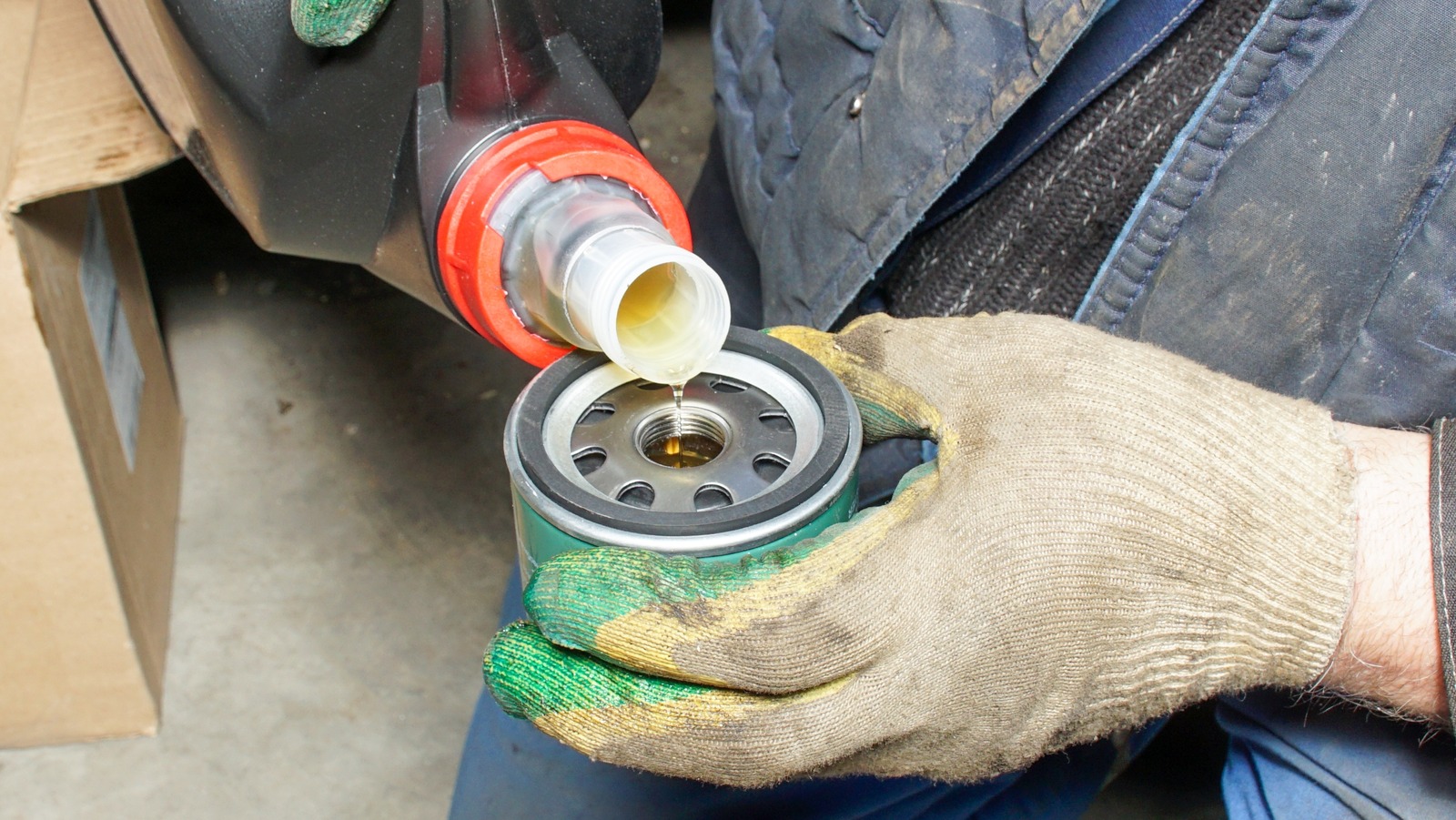Gather a group of gearheads together and there’s bound to be some friendly disagreement over various upkeep and maintenance rituals. For example, whether it’s worthwhile to replace your oil drain plug with a quick-drain valve instead. Another hot topic is whether to pre-fill your new oil filter during money-saving DIY oil changes.
Of course, that’s assuming that you’re able to pre-fill the oil filter at all. If your screw-on filter or cartridge-style filter housing mounts horizontally or faces downward, you won’t be able to pre-fill it without most of the oil spilling out into your engine bay and all over your garage floor or driveway. However, don’t stop reading if that’s the case, because we have some useful tips for drivers with gravity-impaired oil filters, too. But assuming that your oil filter does mount with the opening facing roughly upward and you can easily pre-fill, is it really necessary?
The idea is that pouring some fresh oil into a new filter (or cartridge filter housing) before installing it will give your engine a head start on circulating oil. Instead of waiting for your engine’s oil pump to draw oil from the pan, then pump it through the filter, and finally circulate it around to coat the engine’s internals, you’re effectively skipping the first step, because some oil will already be at the filter. At the risk of oversimplifying, think of pre-filling an oil filter as priming a pump.
There are alternatives to pre-filling
Even after draining all of the old oil from an engine’s oil pan, there’s still going to be a thin film left behind on vital components, so it’s not like the engine will be running completely dry for the few seconds it takes for oil to start circulating post-oil change. Since it’s not even possible to pre-fill the oil filter on certain makes and models because of positioning, auto manufacturers are obviously okay with the short period that the engine is under-oiled (remember the ever-present filmy residue). And it’s not like drivers are cranking engines dry every day. Modern synthetic oils can last a shockingly long time between changes, so the potential additional wear is very infrequent.
If you’re truly concerned about excessive wear from your first engine start post-oil change without pre-filling the filter, there’s a hack available. On some older cars, it’s simple to remove the wire between the single ignition coil and the distributor or just remove the distributor cap. This would allow the engine to crank with the starter motor, but not actually spring to life — the rationale being to keep rpm low by preventing the engine from starting before oil pressure builds. Computer-controlled modern cars also have a little-known way to spin the starter without firing up the engine, called “clear flood mode.” Methods vary by vehicle, but in many cases, this involves holding the accelerator pedal to the floor while cranking.
Pre-filling is still a good idea
On the surface, pre-filling your oil filter seems like it’s potentially unnecessary, but it can’t actually hurt, right? Some rabid oil enthusiasts would disagree. Believe it or not, there’s a contingent that is convinced that brand new oil — straight from an unopened container — is “dirty” with dust or other particulates. For that reason, they recommend pre-filling your screw-on oil filter using the small holes along the perimeter and not the large center hole, so that the new oil passes through the filter media before it starts circulating. (Note that cartridge style oil filters may not have the option to circumvent that “contaminated” new oil, if pre-filling.)
Surprisingly, the theory that new oil may have some tiny quantity of dust or dirt is actually valid, according to filtration specialist Donaldson Hy-Pro. Nonetheless, not pre-filling your oil filter for that reason seems paranoid. After all, when new oil is added to the engine during the oil change, it’s typically through a hole that dumps directly onto the valvetrain. And perhaps your funnel isn’t exactly surgically clean, either. But is that minute dust enough to really matter? Probably not.
So is pre-filling your oil filter during DIY oil changes outdated advice? If you’re able to do so easily and without making a mess, we say go for it. It can’t hurt and will help build oil pressure more quickly. However, don’t lose any sleep if you aren’t able to.





